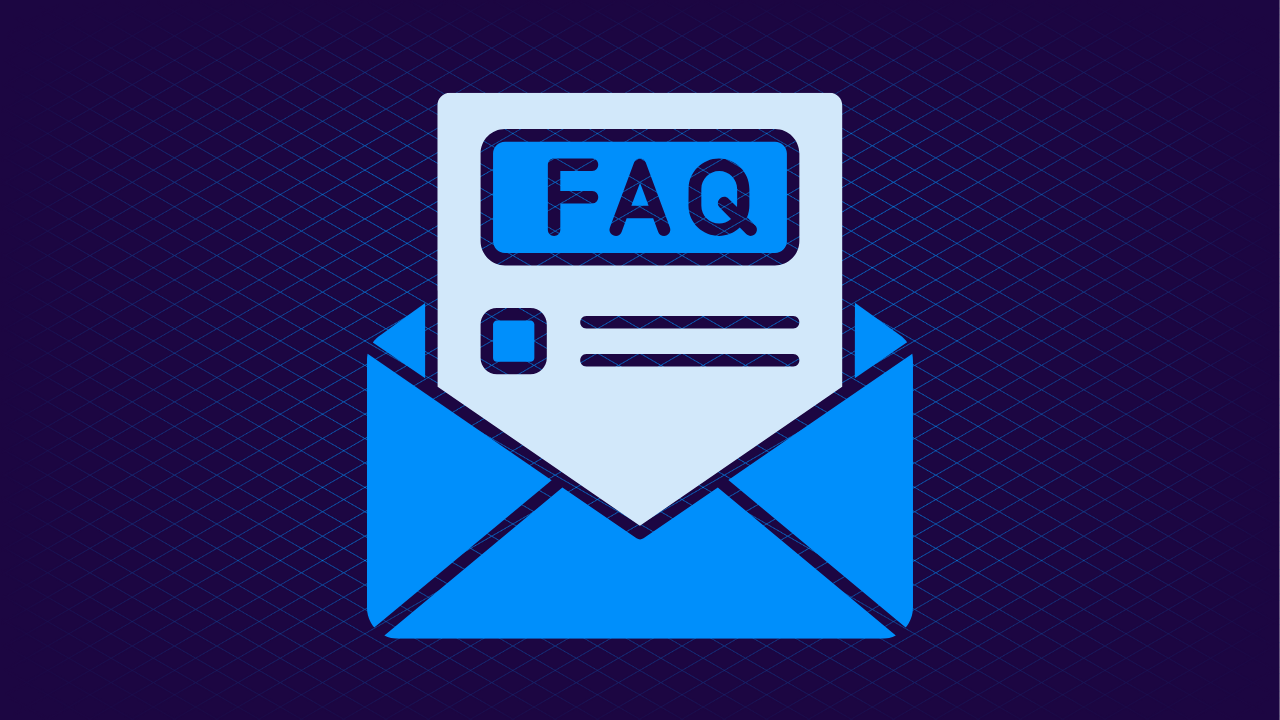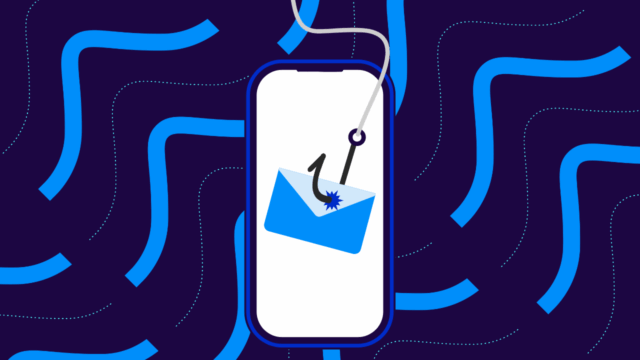Last year, Google and Yahoo announced significant changes to their sender requirements, which went into effect last year. These changes aim to improve users’ overall email experience by minimizing spam, enhancing authentication, and fostering trust between senders and recipients.
While the deadline has passed, there is still time to navigate these requirements and get your domain compliant, so your email doesn’t get blocked. This comprehensive FAQ guide will address common questions, demystify technical terms, and provide practical guidance on implementing the necessary changes to ensure your email marketing efforts remain effective and compliant.
Whether you’re a seasoned email marketer or just starting out, understanding these new standards is essential to maintaining a healthy sender reputation, maximizing deliverability, and protecting your brand’s image.
FAQs on new Google and Yahoo sending requirements
Need a refresher on the upcoming requirements? You can read them in more detail in this blog post, but here’s a quick rundown:
- SPF, DKIM, and DMARC: Implement (SPF or DKIM) protocols for email authentication, as well as DMARC.
- DMARC enforcement: Must set a DMARC policy of at least p=none.
- Unsubscribe compliance: Include a clear unsubscribe link in every email, prominently displayed and easy to find. Allow users to unsubscribe with a single click, without additional steps or forms. You’ll need to process unsubscribe requests within 2 days of receipt.
- Low spam rate: Aim for a spam rate below 0.3% to avoid deliverability issues.
- DNS: Have valid forward and reverse DNS for your mail systems.
While we can’t answer every question floating around in the heads of email marketers worldwide, we’ve done our best to answer the frequently asked and fundamental questions. Beyond answers, we also provide solutions to help you meet these requirements as soon as possible.
1. When did the new Google and Yahoo sender requirements go into effect?
The new Google and Yahoo sender requirements went into effect last year. While some aspects of the requirements are already encouraged, full compliance is mandatory.
Last year, we started seeing error messages being sent out to senders.
2. Who is affected by these email sender requirements?
While primarily targeting bulk email senders, the new Google and Yahoo sender requirements have implications for a broader audience. Here’s a breakdown of who is affected and how:
- Bulk Senders: Specifically, senders exceeding 5,000 emails per day. This applies to businesses and individuals who utilize email marketing platforms for promotional outreach, newsletters, and other mass communication. These senders must implement stricter measures like DMARC enforcement and unsubscribe mechanisms to guarantee optimal deliverability.
- Note: The 5,000 email qualification isn’t calculated on an ongoing basis—it’s a one-and-done kind of deal. Once you send 5,000 emails per day, you’re now classified at that status forever, even if that sending volume was years ago.
- Non-Bulk Senders: Even senders below the 5,000 threshold can benefit from adopting these best practices. Implementing SPF, DKIM, and DMARC authentication protocols enhances email security and reputation, regardless of sending volume. Additionally, adhering to unsubscribe requirements ensures a positive user experience and promotes compliance with email regulations.
3. What are the goals of the Google and Yahoo requirements?
Google and Yahoo are implementing these new requirements to achieve several enhanced outcomes:
- Improved deliverability: The new requirements aim to ensure that legitimate emails reach the intended recipients’ inboxes by implementing stricter authentication protocols like DMARC. This reduces the chances of emails being marked as spam or filtered out, ultimately leading to better engagement and campaign performance.
- Reduced spam and phishing: Strengthening email authentication helps prevent malicious actors from spoofing sender identities and sending spam or phishing emails.
- Enhanced user experience: The new unsubscribe requirements ensure that users have a clear and easy way to opt out of receiving unwanted emails.
- Increased trust: Email senders demonstrate their commitment to responsible email marketing practices by adhering to these new standards.
- Alignment with industry best practices: The new requirements align with established industry best practices for email authentication and deliverability. This helps to ensure consistency across different email platforms and promotes a more standardized approach to email marketing.
4. What happens if I don’t comply with the new requirements?
Google and Yahoo could begin blocking your email if you aren’t compliant with the new requirements.
Failure to comply with the new Google and Yahoo sender requirements can lead to a variety of negative consequences for your email marketing efforts, but the major one is missed opportunities because you can’t message Gmail and Yahoo email recipients.
Ultimately, your emails won’t reach your customers using Gmail and Yahoo inboxes, which make up a vast amount of email users.
5. Do these requirements apply to transactional email?
The applicability of the new Google and Yahoo sender requirements to transactional email depends on how “transactional email” is defined.
Based on their definitions, emails triggered by user actions (such as account confirmations, password resets, purchase receipts, and order updates) are covered by the requirements.
Emails triggered by system events (such as server alerts, security notifications, and billing reminders) are excluded from the requirements. Due to their non-promotional nature, these emails are generally exempt from DMARC enforcement and unsubscribe requirements.
Even for excluded transactional emails, best practices like SPF and DKIM authentication are recommended to improve sender reputation and ensure deliverability. Identify transactional emails in your DMARC policy to ensure they are handled appropriately by email providers.
However, the one-click unsubscribe requirement doesn’t apply to any transactional emails. Google’s guidelines say this only applies to “marketing messages and subscribed messages.”
6. When should I start making these changes?
Yesterday would be preferable, but the next best day is now. While the deadline for full compliance with the new Google and Yahoo sender requirements was February 2024, it’s highly recommended to start making changes as soon as possible to reduce the risk of your email being blocked.
Starting as soon as possible allows for a more gradual and controlled implementation process, reducing the risk of last-minute complications or disruptions to your email sending. Implementing the changes well in advance gives you ample time to identify and address any technical issues or configuration errors that may arise.
Delaying implementation can lead to potential deliverability problems, impacting your email campaign performance and audience reach. Waiting too long to comply can damage your sender reputation with Google and Yahoo, making it harder to recover and achieve optimal deliverability in the future.
7. Do I need both DKIM and SPF? Or just DMARC?
You need both SPF and DKIM in addition to DMARC for optimal email authentication and deliverability. While DMARC builds on and relies on SPF and DKIM, it’s not a replacement.
Here’s a breakdown of each protocol and its role in email authentication:
- SPF (Sender Policy Framework): Acts as a first line of defense against email spoofing. Verifies the sending IP address against a list of authorized IP addresses listed in your DNS record.
- DKIM (DomainKeys Identified Mail): Provides an additional layer of security and trust to your emails. Adds a digital signature to your email headers, verifying the sender’s identity and preventing email tampering.
- DMARC (Domain-based Message Authentication, Reporting & Conformance): Leverages both SPF and DKIM to determine how email providers should handle unauthenticated emails. Allows you to specify whether unauthenticated emails should be quarantined, rejected, or delivered with a warning. Provides valuable reporting data to track email authentication health and identify areas for improvement.
For optimal email authentication and deliverability, it’s important to reach alignment between your SPF, DKIM, and DMARC configurations. This means verifying that the sending domain, IP addresses, and DKIM keys used in each protocol match seamlessly.
Additionally, implementing a DMARC policy with at least ‘p=none’ (monitor) will allow you to gain valuable insights into email authentication performance and identify any potential issues. This is the bare minimum requirement from Google and Yahoo. However, gradually progressing towards stricter DMARC enforcement (such as p=quarantine or p=reject) can further enhance your email security and protect your brand reputation.
8. What goes into the 0.3% spam rate calculation?
Google calculates your spam rate daily, and here’s how they calculate it:
Spam rate = (Number of user complaints / Total email volume) * 100
For example, If you send 10,000 emails and receive 30 user complaints, your spam rate would be:
Spam rate = (30 complaints / 10,000 emails) * 100 = 0.3%
The user complaint number is calculated by the number of users who click the “Report Spam” button on their email client when receiving one of your emails.
Unsubscribes do not hurt your spam rate.
Here are some ways to keep your spam rate low:
- Send relevant and valuable content to your subscribers.
- Maintain a clean and up-to-date email list.
- Avoid misleading subject lines and excessive sending frequency.
- Clearly identify yourself and your company in your emails.
- Include a clear and accessible unsubscribe link in every email.
- Promptly process unsubscribe requests.
- Monitor your spam rate regularly and take corrective actions as needed.
9. How do I meet the unsubscribe criteria?
Meeting the unsubscribe criteria outlined by Google and Yahoo involves implementing several key aspects:
- Transparent and accessible unsubscribe link: Include a clear and easily identifiable unsubscribe link in every email you send. This link should be visible and accessible, not hidden or buried within the email content. Consider using text like “Unsubscribe” or “Click here to unsubscribe.”
- One-click unsubscribe: Implement a one-click unsubscribe mechanism that allows users to opt out of your emails with a single click. This helps users avoid filling out forms or providing additional information to unsubscribe. Senders have until June 1, 2024, to add one-click unsubscribes to their messages.
- Prompt processing: Process unsubscribe requests promptly within 2 days of receipt. This demonstrates respect for your subscribers and helps maintain a positive reputation.
- Confirmation and opt-out: Send a confirmation email after a user unsubscribes, informing them of their successful opt-out. This provides transparency and ensures users understand that their request has been processed.
- Unsubscribe list management: Maintain an accurate list of unsubscribed users and ensure they are excluded from future email campaigns. Use email list management tools to help automate this process and prevent unintentional re-engagement.
Consider including an unsubscribe preference center, allowing users to manage their subscription settings and choose the frequency or types of emails they receive. Additionally, provide clear instructions on how to unsubscribe from different devices or platforms.
10. Is the unsubscribe link a requirement or just a suggestion as part of this?
The unsubscribe link is a requirement, not just a suggestion, as part of the new Google and Yahoo sender requirements. Both platforms explicitly state the need for a clear and accessible unsubscribe option in all emails.
11. How quickly do I need to act upon unsubscribe actions?
The new Google and Yahoo sender requirements mandate that you process unsubscribe requests promptly, within 2 days of receipt. This means removing the unsubscribed email address from your mailing list and ensuring they no longer receive any further marketing emails from you.
12. How can I review my current authentication protocols?
DMARC at p=none is the best way to audit a domain’s current authentication practices. Your monitoring DMARC reports will provide valuable information on your authentication status and any holes in your protection.
It can take a bit of nitty-gritty work to analyze these reports manually, and that’s why we provide tools like Valimail Monitor. A free solution like Valimail Monitor lets you check the status of your DMARC implementation and eliminates the need for ongoing manual analysis of XML-based DMARC reports.
In order to receive these reports, all you need to do is publish a DMARC record with a policy of “p=none” and a rua tag pointing at a mailbox that can receive the reports. You really only need 3 basic DMARC tags to make a complete DMARC record.
13. What are some common challenges email marketers face when implementing these new requirements?
Implementing the new Google and Yahoo sender requirements can be challenging for email marketers, especially those unfamiliar with email authentication protocols and DMARC policy configuration. Here are a few technical challenges you might run into:
- Understanding SPF, DKIM, and DMARC: Setting up and managing these protocols can be complex, especially for users with limited technical expertise.
- DNS record configuration: Configuring DNS records for SPF and DKIM can be intricate and prone to errors, potentially impacting email delivery.
- Integration with email service provider (ESP): Integrating authentication protocols and DMARC settings with your ESP can require technical knowledge and involve specific configuration steps.
- Troubleshooting issues: Identifying and resolving technical issues related to authentication and DMARC can be time-consuming and require advanced troubleshooting skills.
- Achieving DMARC compliance: While Google and Yahoo only require a DMARC policy of p=none, if you do it incorrectly, you’ll fail DMARC authentication and get your emails blocked. Use a hosted software service like Valimail (in conjunction with your IT team) to make sure you make your DNS changes correctly.
- Managing unsubscriptions: Implementing a user-friendly unsubscribe process and promptly processing unsubscribe requests can be challenging, especially for large mailing lists.
- Maintaining a low spam rate: Avoiding exceeding the 0.3% spam rate threshold can be difficult, requiring close monitoring and ongoing efforts to maintain good email hygiene.
Partner with Valimail to meet the new sending requirements
Navigating the new Google and Yahoo sender requirements can feel overwhelming. Fortunately, you don’t have to go it alone. Valimail offers a comprehensive suite of solutions to help businesses of all sizes achieve compliance and build a strong sender reputation.
Our platform provides the following to help you meet the new sending requirements:
- Automated DMARC deployment and enforcement: Ensure your emails are authenticated and protected from spoofing.
- Real-time email monitoring and reporting: Gain valuable insights into your email deliverability and identify potential issues.
- Expert guidance and support: Our team of email deliverability specialists is here to assist you every step of the way.
- Simplified compliance: Implement the required protocols and fully comply with the new regulations.
Don’t let the new sending requirements become a burden. Confused about the new Google and Yahoo sending rules? Valimail’s free Monitor tool takes the guesswork out of compliance. See if your emails are ready to land in inboxes and avoid frustrating deliverability issues. And if you need some extra help, our email experts are here to guide you every step of the way.



